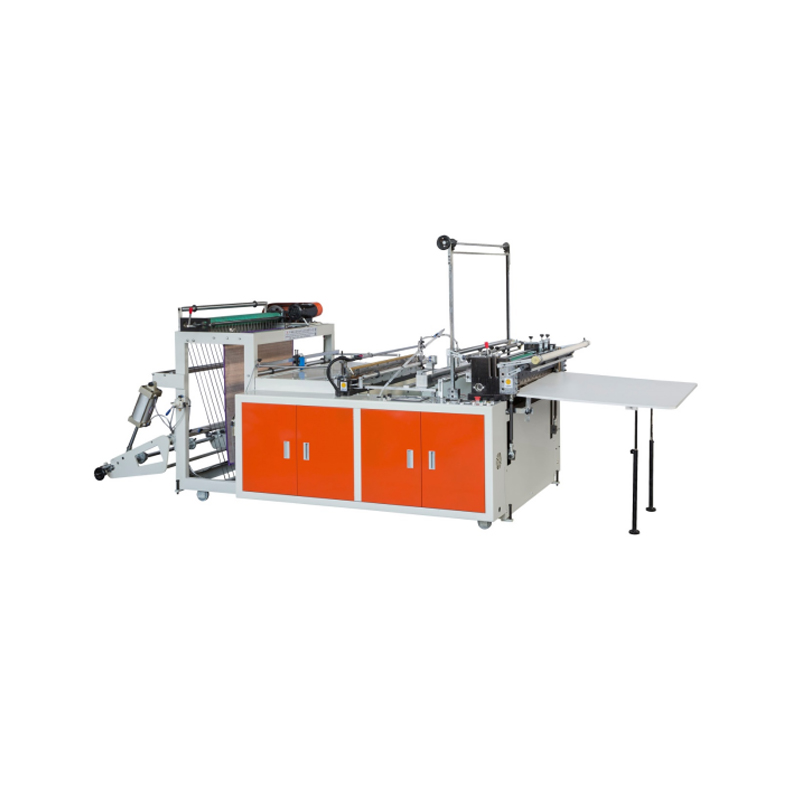Heat Seal Cold Cut Bag Making Machines: Enhancing Precision and Efficiency in Bag Manufacturing
 By Admin
By Admin
The flexible packaging industry continues to evolve rapidly, driven by increasing demands for high-quality products, faster production speeds, and reduced waste. One technology that has garnered significant attention for its balance of performance and cost-efficiency is the Heat Seal Cold Cut Bag Making Machine. By combining the advantages of heat sealing with a cold cutting process, these machines have become indispensable tools for producing durable, clean-edged bags across multiple industries.
1. Hybrid Sealing and Cutting Technology
The core innovation of heat seal cold cut machines lies in their dual-process approach. They employ heat sealing to form strong, airtight seams by melting polymer layers together, while cold cutting uses sharp blades to separate the bags without applying heat to the cutting edges.
This separation of sealing and cutting functions ensures that seals maintain strength without the cutting process compromising edge integrity. The cold cut produces clean, burr-free edges, reducing defects commonly caused by hot knife cutting such as melting or uneven trimming.
2. Bag Quality and Structural Integrity
Heat sealing delivers consistent and reliable seals essential for bags designed to contain liquids, powders, or delicate products. The precise temperature and pressure control inherent to these machines results in uniform welds with high tensile and peel strength.
Coupled with cold cutting, the finished bags feature smooth edges that resist tearing and stress, improving durability during handling, filling, and transportation. This quality boost is particularly beneficial for food packaging, medical supplies, and industrial materials.
3. Versatility with Various Film Types and Thicknesses
Heat seal cold cut bag making machines are engineered to process a broad spectrum of thermoplastic films, including polyethylene (PE), polypropylene (PP), laminated barrier films, and biodegradable materials. The equipment can handle films ranging from thin lightweight sheets (~15 microns) to thicker industrial-grade materials (up to 100 microns).
Adjustable sealing parameters and cutting blade configurations allow the machine to accommodate diverse bag formats such as gusseted bags, flat pouches, and stand-up bags, providing manufacturers with tremendous flexibility.

4. Increased Production Efficiency and Speed
By integrating high-precision sealing and cutting mechanisms, these machines support continuous production speeds typically between 50 and 130 bags per minute, depending on bag size and film type.
The cold cutting method reduces mechanical wear and heat-related downtime often encountered with hot knives, resulting in less maintenance and longer blade life. This efficiency translates to higher throughput, reduced scrap, and lower operational costs.
5. Precision Control and Automation
heat seal cold cut machines feature advanced PLC (programmable logic controller) systems with user-friendly touchscreens, allowing precise control over sealing temperatures, dwell times, cutting blade positioning, and bag length.
Integrated sensors monitor key process variables in real-time, ensuring consistent bag dimensions, seal quality, and edge finish. Automated fault detection defective output, protecting raw materials and improving overall yield.
6. Energy-Saving Operation
Cold cutting requires less energy compared to heated blade systems, which helps reduce electricity consumption during production. Meanwhile, the heat sealing units employ optimized heating elements and insulation to maintain stable temperatures with power waste.
This combination of energy-conscious design features supports sustainable manufacturing initiatives and helps reduce operational costs over time.
7. Enhanced Safety Features
The combination of heat and sharp cutting elements necessitates rigorous safety mechanisms. Heat seal cold cut machines are equipped with protective guards, emergency stop buttons, and safety interlocks that disable the machine when access doors are open.
These safety features protect operators from burn hazards and cutting injuries while ensuring compliance with workplace safety regulations.
8. Simplified Maintenance and Blade Replacement
Cold cutting blades, typically made from hardened steel or tungsten carbide, are designed for easy removal and replacement without extensive disassembly. This feature allows for quick maintenance turnarounds, reducing machine downtime.
Heat sealing bars and other consumables are also accessible for routine cleaning and calibration, helping maintain sealing performance.




